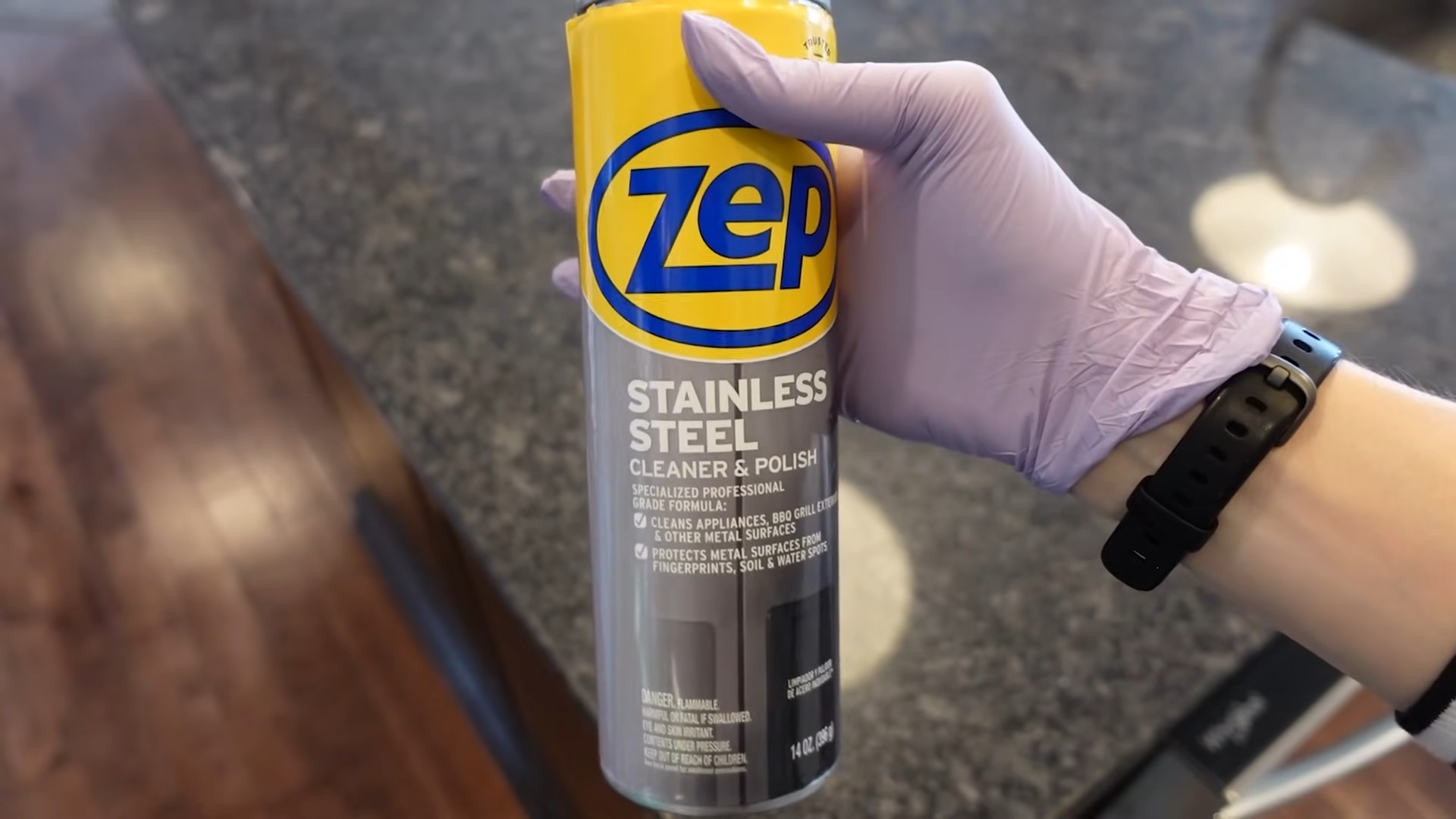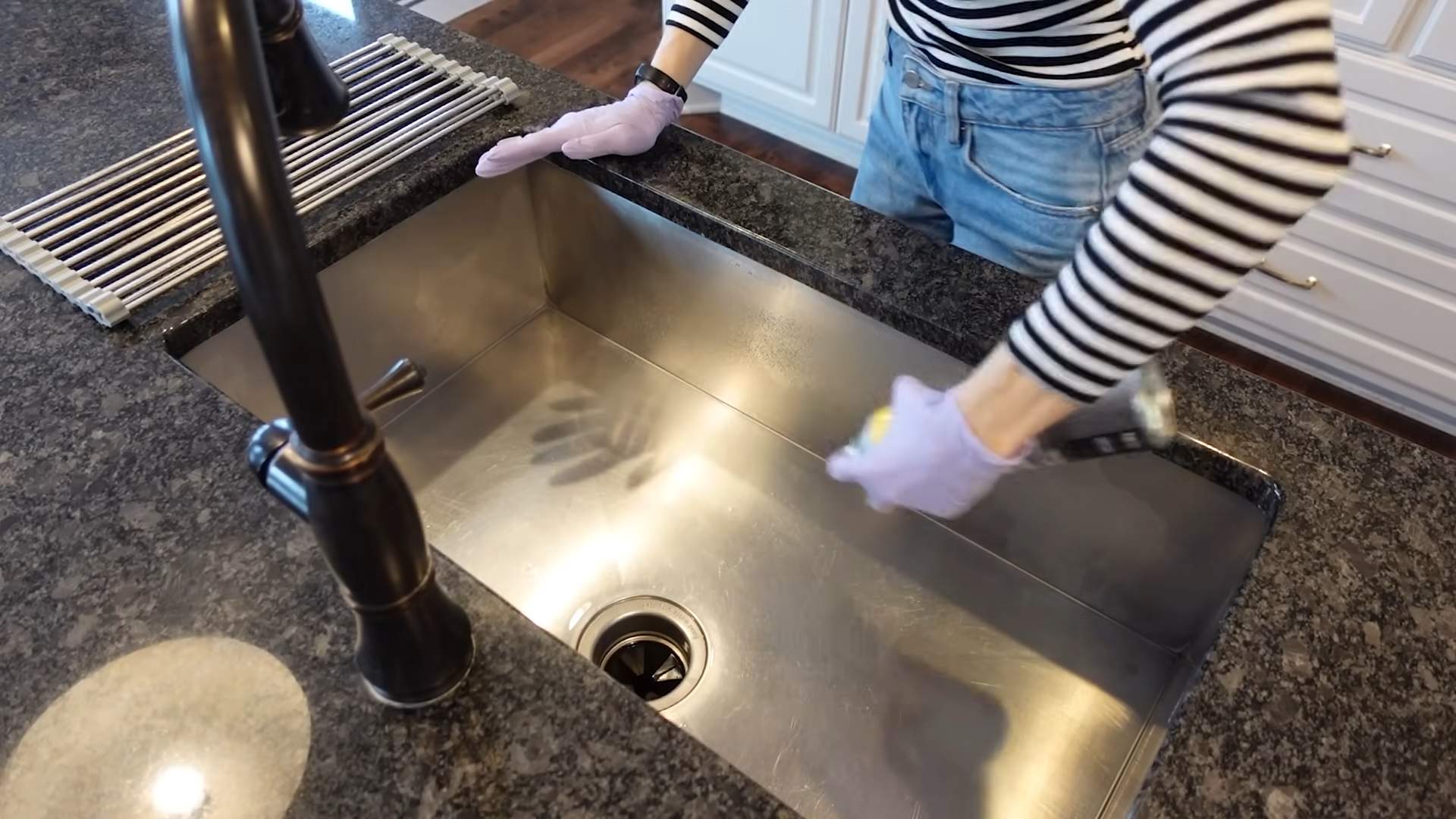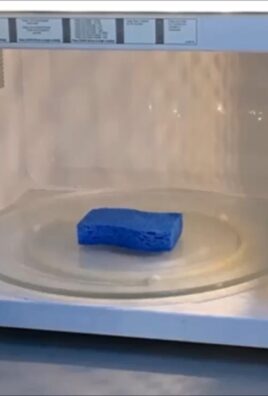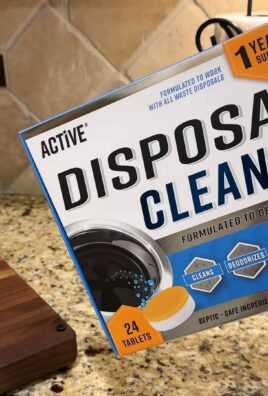Stainless Steel Appliance Cleaning: Are your once-gleaming stainless steel appliances now sporting a collection of fingerprints, smudges, and water spots? Don’t despair! I know the frustration of trying to maintain that sleek, modern look in your kitchen. It feels like a never-ending battle, doesn’t it?
Stainless steel has become a staple in modern kitchens, prized for its durability and aesthetic appeal. Its popularity surged in the mid-20th century, moving from industrial applications to residential homes, symbolizing a blend of functionality and contemporary design. But let’s be honest, keeping it clean can be a real chore!
That’s why I’m sharing my ultimate guide to stainless steel appliance cleaning, packed with easy DIY tricks and hacks that will restore your appliances to their former glory. Forget expensive cleaners and harsh chemicals. I’ll show you how to achieve a sparkling clean using simple ingredients you probably already have in your pantry.
Why is this so important? Because a clean kitchen is a happy kitchen! Not only does it look better, but removing grime and buildup can also extend the lifespan of your valuable appliances. Plus, who doesn’t love the feeling of accomplishment that comes with a beautifully clean space? Let’s dive in and discover the secrets to effortless stainless steel appliance cleaning!

DIY Stainless Steel Appliance Cleaning: A Streak-Free Shine!
Alright, let’s face it: stainless steel appliances are gorgeous… until they’re covered in fingerprints, smudges, and water spots. Then they’re just a magnet for frustration! But don’t worry, I’m here to share my tried-and-true methods for getting that showroom shine back without breaking the bank or using harsh chemicals. I’ve experimented with tons of different approaches, and these are the ones that consistently deliver amazing results.
Understanding Stainless Steel Grain
Before we dive in, it’s crucial to understand the grain of your stainless steel. You’ll notice faint lines running in one direction. Always clean *with* the grain, not against it. This prevents streaks and scratches. Trust me, it makes a huge difference!
What You’ll Need: The Arsenal of Clean
Here’s what you’ll need to gather before we get started. I like to have everything ready so I can work efficiently.
* Microfiber cloths: These are essential! They’re super absorbent and won’t leave lint behind. Get a few, because you’ll want to use a clean one for each step.
* Spray bottle: A simple spray bottle will do the trick.
* White vinegar: My go-to natural cleaner! It’s amazing for cutting through grease and grime.
* Dish soap: A mild dish soap is perfect for tackling tougher stains.
* Olive oil (or mineral oil): This is the secret weapon for that final, streak-free shine!
* Baking soda (optional): For really stubborn stains, baking soda can be your best friend.
* Warm water: The foundation of our cleaning solution.
* Soft toothbrush (optional): Great for getting into tight corners and around handles.
* Rubber gloves (optional): If you have sensitive skin, gloves are always a good idea.
The Cleaning Process: Step-by-Step to Sparkling
Okay, let’s get down to business! I’ve broken down the cleaning process into easy-to-follow steps.
1. Prepare Your Cleaning Solution: In your spray bottle, mix equal parts white vinegar and warm water. This is my everyday cleaning solution for stainless steel. It’s gentle, effective, and smells way better than harsh chemicals.
2. Spray and Wipe: Lightly spray the vinegar solution onto the surface of your appliance. Don’t over-saturate it; a light mist is all you need. Then, using a clean microfiber cloth, wipe *with* the grain of the stainless steel. Apply gentle pressure to remove dirt and grime.
3. Tackle Stubborn Stains (If Needed): If you encounter any stubborn stains that the vinegar solution doesn’t remove, don’t panic! Here’s where the dish soap and baking soda come in.
* Dish Soap Method: Add a drop or two of mild dish soap to a damp microfiber cloth. Gently scrub the stain *with* the grain. Rinse the area with a clean, damp cloth to remove any soap residue.
* Baking Soda Paste Method: For really tough stains, make a paste of baking soda and water (about 1 tablespoon of baking soda to 1 teaspoon of water). Apply the paste to the stain and let it sit for a few minutes. Then, gently scrub *with* the grain using a soft cloth or toothbrush. Rinse thoroughly with a clean, damp cloth. Be careful not to scrub too hard, as baking soda can be abrasive.
4. Rinse and Dry: Once you’ve removed all the dirt and stains, rinse the entire surface with a clean, damp microfiber cloth. This is important to remove any lingering vinegar or soap residue. Then, use a dry microfiber cloth to thoroughly dry the appliance. Again, wipe *with* the grain.
5. The Olive Oil Magic: This is the step that takes your stainless steel from clean to *glowing*. Pour a small amount of olive oil (or mineral oil) onto a clean, dry microfiber cloth. A little goes a long way!
6. Buff to a Shine: Gently buff the olive oil into the stainless steel, working *with* the grain. Use a circular motion to spread the oil evenly. Then, use a clean section of the microfiber cloth to buff away any excess oil. You’ll see the shine start to emerge!
7. Admire Your Work!: Step back and admire your sparkling, streak-free stainless steel appliances! You did it!
Deep Cleaning: For Those Extra Grimy Appliances
Sometimes, a simple wipe-down isn’t enough. If your appliances are particularly dirty or haven’t been cleaned in a while, you might need to do a deep clean. Here’s how I tackle those situations:
1. Pre-Clean with Hot, Soapy Water: Fill a bucket with hot water and add a squirt of dish soap. Use a soft sponge or cloth to wash the entire appliance, paying special attention to areas with heavy grime.
2. Rinse Thoroughly: Rinse the appliance thoroughly with clean water to remove all soap residue.
3. Follow the Regular Cleaning Steps: Once the appliance is clean and dry, follow the steps outlined above, starting with the vinegar solution and ending with the olive oil polish.
Specific Appliance Tips: Because Each One is Different
While the general cleaning process is the same, here are a few tips for specific appliances:
* Refrigerator: Pay extra attention to the handles and around the ice and water dispenser, as these areas tend to accumulate the most fingerprints and spills. Don’t forget to clean the top of the refrigerator, too! Dust and grime can build up there.
* Dishwasher: Clean around the door and control panel. You can also run an empty dishwasher cycle with a cup of white vinegar to help remove any buildup inside.
* Oven: Be careful when cleaning around the oven door seal. Avoid using abrasive cleaners, as they can damage the seal. For stubborn grease splatters inside the oven, use a commercial oven cleaner or a baking soda paste.
* Microwave: Clean the inside of the microwave regularly to prevent food splatters from hardening. You can steam clean it by heating a cup of water with a slice of lemon for a few minutes. Then, wipe down the interior with a damp cloth.
* Range Hood: The range hood can get greasy quickly. Use a degreasing cleaner or a mixture of dish soap and hot water to remove grease buildup. You may need to soak the filters in hot, soapy water to loosen stubborn grease.
Preventative Measures: Keeping the Shine Longer
The best way to keep your stainless steel appliances looking their best is to prevent them from getting too dirty in the first place. Here are a few tips:
* Wipe up spills immediately: Don’t let spills sit and dry, as they can be harder to remove later.
* Clean regularly: A quick wipe-down with the vinegar solution every few days can prevent grime from building up.
* Avoid touching the appliances with greasy hands: This is easier said than done, but try to avoid touching the appliances with greasy hands, as fingerprints are the biggest culprit.
* Use appliance covers: If you’re really serious about protecting your appliances, you can use appliance covers to keep them clean and dust-free.
Troubleshooting: Common Problems and Solutions
Even with the best cleaning methods, you might encounter a few problems. Here are some common issues and how to fix them:
* Streaks: If you’re still seeing streaks after cleaning, make sure you’re wiping *with* the grain of the stainless steel. Also, make sure you’re using a clean microfiber cloth and not applying too much olive oil.
* Water spots: Water spots can be caused by hard water. Try using distilled water for rinsing to prevent water spots. You can also use a commercial stainless steel cleaner that is designed to prevent water spots.
* Rust: While stainless steel is resistant to rust, it can still occur in certain conditions. If you see rust, try using a commercial rust remover or a paste of baking soda and water.
* Scratches: Avoid using abrasive cleaners or scrub brushes, as they can scratch the stainless steel. If you do get a scratch, you can try using a stainless steel scratch repair kit.
A Note on Commercial Cleaners
While I prefer to use natural cleaning solutions, there are many commercial stainless steel cleaners available. If you choose to use a commercial cleaner, be sure to follow the manufacturer’s instructions carefully. Always test the cleaner in an inconspicuous area first to make sure it doesn’t damage the finish.
Final Thoughts: Enjoy Your Sparkling Kitchen!
Cleaning stainless steel appliances doesn’t have to be a chore. With these simple tips and tricks, you can keep your appliances looking their best without spending a fortune or using harsh chemicals. So, grab your microfiber cloths, your vinegar, and your olive oil, and get ready to transform your kitchen into a sparkling oasis! I hope this guide has

Conclusion
So, there you have it! Mastering the art of stainless steel appliance cleaning doesn’t require expensive, specialized products or hours of scrubbing. This simple, DIY approach, using ingredients you likely already have in your pantry, is a game-changer for anyone looking to maintain the sleek, modern look of their kitchen.
Why is this a must-try? Because it’s effective, affordable, and environmentally friendly. Commercial stainless steel cleaners often contain harsh chemicals that can be harmful to your health and the planet. This DIY method relies on the power of natural ingredients like vinegar and baking soda, which are gentle yet powerful cleaning agents. You’ll be amazed at how easily it cuts through grease, fingerprints, and water spots, leaving your appliances sparkling clean and streak-free.
Beyond the basic method, there are several variations you can explore to tailor the cleaning process to your specific needs and preferences. For instance, if you’re dealing with particularly stubborn stains, try creating a paste of baking soda and water, applying it to the affected area, and letting it sit for a few minutes before wiping it away. For an extra boost of shine, consider adding a few drops of lemon essential oil to your cleaning solution. The lemon oil not only enhances the cleaning power but also leaves a refreshing citrus scent.
Another variation involves using club soda for a final rinse. The carbonation in club soda helps to lift away any remaining residue and leaves a brilliant, streak-free finish. Simply spray club soda onto your cleaned appliance and wipe it down with a clean microfiber cloth.
Remember to always test any cleaning solution on an inconspicuous area of your appliance first to ensure it doesn’t cause any discoloration or damage. Different stainless steel finishes may react differently to certain cleaning agents.
But the real beauty of this DIY trick lies in its simplicity and accessibility. You don’t need to be a cleaning expert to achieve professional-looking results. With just a few simple steps and readily available ingredients, you can transform your kitchen from dull and grimy to bright and inviting.
We’re confident that once you try this DIY stainless steel appliance cleaning method, you’ll never go back to store-bought cleaners again. It’s a cost-effective, eco-friendly, and highly effective way to keep your appliances looking their best.
So, what are you waiting for? Give it a try and see the difference for yourself! We’re eager to hear about your experiences. Share your before-and-after photos and cleaning tips in the comments below. Let’s create a community of sparkling clean kitchens! Your feedback will not only help other readers but also inspire us to continue sharing valuable DIY solutions. Don’t forget to mention any variations you tried and how they worked for you. Let’s unlock the secrets to a spotless kitchen, together!
Frequently Asked Questions (FAQ)
What type of vinegar should I use for cleaning stainless steel appliances?
White distilled vinegar is the best option for cleaning stainless steel appliances. It’s readily available, inexpensive, and effective at cutting through grease and grime. Avoid using other types of vinegar, such as apple cider vinegar or balsamic vinegar, as they may contain sugars or acids that could potentially damage the finish of your appliances.
Can I use this cleaning method on all stainless steel appliances?
Yes, this cleaning method is generally safe for use on most stainless steel appliances, including refrigerators, dishwashers, ovens, microwaves, and stovetops. However, it’s always a good idea to test the cleaning solution on an inconspicuous area of the appliance first to ensure it doesn’t cause any discoloration or damage. Different stainless steel finishes may react differently to certain cleaning agents.
How often should I clean my stainless steel appliances?
The frequency of cleaning depends on how often you use your appliances and how prone they are to getting dirty. As a general rule, it’s a good idea to wipe down your stainless steel appliances with a damp cloth and mild detergent after each use to prevent the buildup of grease and grime. For a more thorough cleaning, you can use the DIY method described in this article once or twice a week.
What type of cloth should I use for cleaning stainless steel appliances?
Microfiber cloths are the best option for cleaning stainless steel appliances. They are soft, absorbent, and non-abrasive, which means they won’t scratch or damage the finish of your appliances. Avoid using abrasive sponges or scouring pads, as they can leave scratches on the surface of the stainless steel.
How do I remove stubborn stains from my stainless steel appliances?
For stubborn stains, try creating a paste of baking soda and water. Apply the paste to the affected area and let it sit for a few minutes before wiping it away with a damp cloth. You can also try using a commercial stainless steel cleaner specifically designed for removing stubborn stains. Always follow the manufacturer’s instructions carefully.
Will this cleaning method remove scratches from my stainless steel appliances?
Unfortunately, this cleaning method will not remove existing scratches from your stainless steel appliances. Scratches are permanent damage to the surface of the metal. However, this cleaning method can help to minimize the appearance of scratches by removing dirt and grime that can make them more noticeable.
Can I use this cleaning method on brushed stainless steel?
Yes, this cleaning method is safe for use on brushed stainless steel. However, it’s important to wipe in the direction of the grain to avoid leaving streaks. The grain refers to the subtle lines that run along the surface of the brushed stainless steel. Wiping in the same direction as the grain will help to maintain the uniform appearance of the finish.
Is it safe to use vinegar on stainless steel?
Yes, vinegar is generally safe to use on stainless steel. However, it’s important to dilute the vinegar with water to prevent it from being too acidic. A 50/50 solution of vinegar and water is usually sufficient for cleaning most stainless steel appliances. Avoid using undiluted vinegar, as it could potentially damage the finish of your appliances over time.
How do I prevent streaks when cleaning stainless steel?
To prevent streaks when cleaning stainless steel, make sure to use a clean, dry microfiber cloth. Avoid using too much cleaning solution, as this can leave behind a residue that can cause streaks. Wipe in the direction of the grain of the stainless steel. For a final polish, you can use a dry microfiber cloth to buff the surface of the appliance.
Can I use essential oils to clean stainless steel appliances?
Yes, you can add a few drops of essential oil to your cleaning solution for an extra boost of cleaning power and a pleasant scent. Lemon essential oil is a popular choice for cleaning stainless steel appliances, as it has natural degreasing properties and leaves a refreshing citrus scent. Other essential oils that you can use include tea tree oil, lavender oil, and eucalyptus oil. However, always use essential oils sparingly, as they can be quite potent.




Leave a Comment